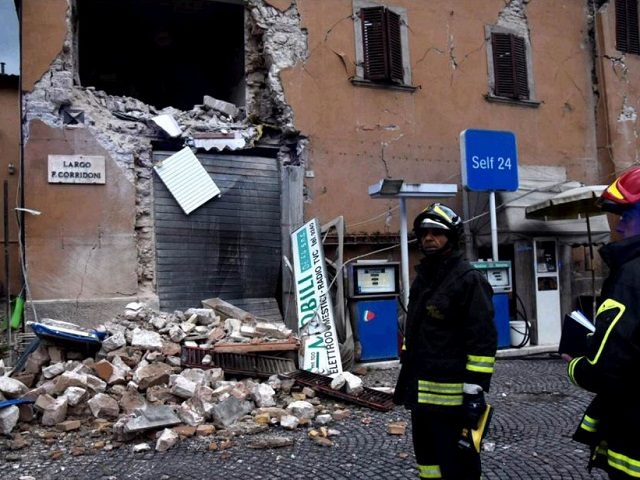Just two months after a major earthquake laid waste several towns of central Italy, three more quakes came in succession Wednesday night, leaving more devastation and thousands of displaced persons.
Central Italy had not yet recovered from the major damage wreaked in August, only to face temblors that shook buildings as far south as Rome, some 120 miles from the quakes’ epicenter in the region of Le Marche. The earthquakes reportedly shook Rome’s world heritage ancient buildings, including the Colosseum and Pantheon.
“We’ve got something like two or three thousand displaced people, and I fear many more uninhabitable homes than those registered after the earthquake of August 24,” reported Cesare Spuri, the head of the Marche Civil Protection, referring to the quake that killed some 300 people.
The first earthquake struck at 7:10pm, with epicenter in the Nera Valley, in Le Marche, and a magnitude of 5.4 on the Richter scale. Two hours later, at 9:18pm, a more intense and lasting quake hit, registering 5.9. The final temblor was recorded at 11:42pm with a magnitude of 4.6, according to the National Institute of Geophysics surveys.
The epicenters of the three quakes were all in the same vicinity, not 15 miles from the devastating earthquake that struck the medieval town of Norcia in August.
“It’s hard to speak of an aftershock,” said Spuri. “It’s a second earthquake: the area that had already been put to the test is now in a situation of extreme gravity.”
The only difference between the two quakes, Spuri added, is that for the moment there have been no deaths, aside from a 73-year-old man who died from a heart attack after the first quake struck.
But in the town of Camerino alone, some 700 people are temporarily without homes, and spent the night in two makeshift camps set up for the emergency. Meanwhile, dozens of people have been hospitalized for shock or other injuries.
The hardest hit cities and towns include Visso, Ussita, Castelsantangelo sul Nera, Muccia, Pieve Torina, San Gines, Camerino, Caldarola, in short, all the areas surrounding the quakes’ epicentral area.
“My engineers tell me that the old town is under such conditions that it might all be unusable,” said the mayor of Visso, Giuliano Pazzaglini. “We had no casualties and only three minor injuries, but the damage to the buildings are very serious. Many have lost part of their façade and a church collapsed in Borgo Sant’Antonio.
According to the mayor of Ussita, Giuliano Rinaldi, “a number of houses have collapsed and our town is finished.”
Follow Thomas D. Williams on Twitter Follow @tdwilliamsrome

COMMENTS
Please let us know if you're having issues with commenting.